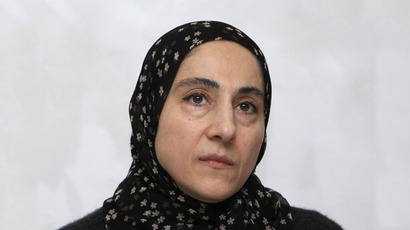US counter-terror database jumps to 875,000 names – report

The number of names on a US database used to track suspected terrorists has skyrocketed to 875,000 in five years, a US official told media. One of the alleged Boston Marathon bombers, Tamerlan Tsarnaev, was added to the list in 2011.
The Terrorist Identities Datamart Environment (TIDE) database
has reached 875,000 names from 540,000 just five years ago, an
anonymous official told Reuters. The increase in names is due in
part to security agencies using the system more in the wake of the
failed 2009 attack on a plane by "underpants bomber" Umar Farouk
Abdulmutallab in Detroit.
US agencies use the database to build other catalogs of possible
terrorists, such as the ‘no-fly’ list. The list is maintained by
the National Counterterrorism Center.
The vast size of TIDE came into the spotlight after last month’s
Boston Marathon bombing, which killed three people and injured more
than 260 others.
Twenty-six-year-old Tamerlan Tsarnaev was proved to have been on
the list since 2011, after the CIA received a request from Russian
authorities to investigate him for suspected radical Islamist
activities.

After being put in the TIDE system, Tsarnaev’s name was entered in another database maintained by the Homeland Security Department’s Customs and Border Protection bureau. Tsarnaev was flagged on that database when he left the US for Russia in January 2012, but no alarm was raised.
When he returned from Russia six months later, he had been automatically downgraded in the database, as there was no new information requiring that he be placed under further scrutiny.
Tsarnaev’s inclusion in the list, as well as the tip-off from the Russian government, prompted many to criticize the US for allowing the alleged terrorist to fall through the cracks.
But officials say that simply being listed in TIDE is not enough to justify special attention by law enforcement, and that Tsarnaev was not known to be an active threat.
TIDE has been scrutinized in the past for being so large and vague. However, an official familiar with the latest statistics said that the growing database does not mean the information is any less manageable. He said that intelligence agencies have become better at extracting information from the sea of data.
But others are less optimistic about the database’s growth, fearing it could have negative consequences on TIDE’s efficiency.
"What you want is more focus, not less focus. It can't be just about quantity. It has to be about specificity," said Karen Greenberg, expert in counter-terrorism policy at Fordham University.














